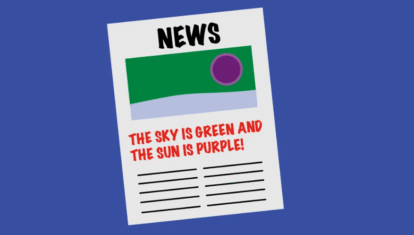In recent years, social media has become a dominant force in shaping how news is disseminated and consumed. Platforms like Twitter, Facebook, Instagram, and TikTok have altered the traditional media landscape by providing immediate access to information, enabling users to interact with the news, and influencing how stories unfold. In this article, we explore the profound role that social media plays in shaping today’s news, the positive and negative impacts it brings, and the ethical considerations that arise with this shift.
Introduction: The Intersection of Social Media and News
Social media platforms were initially designed to connect people and share personal content. However, over time, they have evolved into powerful tools for sharing news, information, and opinions on a global scale. Today, a significant portion of the population turns to social media first to get updates on breaking news, often bypassing traditional media outlets like television, radio, and newspapers.
1. Social Media as a Primary News Source
1.1 The Rise of Social Media News Consumption
In recent years, more and more individuals have shifted from traditional news sources to social media platforms to get their information. According to studies, a substantial portion of the population—especially younger generations—rely on platforms like Facebook, Twitter, and Instagram as their primary news source. This trend has led to a decline in traditional media consumption, such as newspapers and TV broadcasts.
See also: Breaking News: How to Spot Fake News and Misinformation
1.2 Immediate Access to Breaking News
One of the key advantages of social media is its ability to deliver news in real-time. Unlike traditional news outlets that follow editorial processes and may take time to verify facts, social media allows for instant reporting. In moments of breaking news, users can share live updates, photos, and videos, often before journalists and news organizations can publish official reports.
2. The Influence of Social Media Platforms on News Narratives
2.1 Creating Viral News Stories
Social media platforms amplify certain stories, helping them go viral. A tweet, Instagram post, or Facebook update can quickly gain traction, attracting millions of views, shares, and comments. This viral nature of social media gives certain stories an unprecedented level of exposure, even if they were initially obscure or underreported in mainstream media.
2.2 Shaping Public Opinion
Social media doesn’t just distribute news; it also shapes how people perceive it. With the ability to comment, like, share, and participate in discussions, individuals are more involved in the narrative-building process. Influencers, activists, and politicians often use these platforms to shape public opinion, creating a feedback loop between content creators and consumers.
2.3 The Role of Algorithms in Content Distribution
The way news is distributed on social media is heavily influenced by algorithms designed to prioritize content that aligns with users’ preferences. These algorithms often show users news stories that reflect their existing beliefs and interests, creating a bubble of confirmation bias. While this helps maintain engagement, it can also limit exposure to diverse viewpoints, skewing perceptions of certain events or issues.
3. Citizen Journalism: Empowering the Public to Report the News
3.1 The Democratization of News
Social media has democratized news reporting by giving ordinary people the ability to share their observations, experiences, and perspectives with the world. Citizen journalists, who might not have formal training, are able to report breaking news, capture compelling photos and videos, and provide firsthand accounts of events that may otherwise go unnoticed by mainstream media.
3.2 Case Studies: The Arab Spring and Other Global Events
One of the most powerful examples of citizen journalism facilitated by social media was the Arab Spring, where individuals used platforms like Twitter and Facebook to organize protests, share updates, and expose government actions. Social media also played a vital role in other global events, such as the Black Lives Matter movement and the #MeToo movement, by helping activists spread awareness and mobilize communities for change.
4. The Dark Side: Misinformation and Fake News
4.1 The Spread of Misinformation
While social media can be an incredible tool for spreading important information, it also has a dark side. Misinformation and fake news can spread rapidly, sometimes with more reach than the truth. False stories, conspiracy theories, and hoaxes are often shared and re-shared, causing confusion, panic, and even harm to individuals or groups.
4.2 The Role of Social Media in Political Polarization
The algorithms of social media platforms, designed to prioritize engaging content, often promote sensationalized stories, which can fuel political polarization. Users may become trapped in echo chambers where they only encounter viewpoints that align with their own, reinforcing divisive narratives and undermining efforts for compromise or mutual understanding.
4.3 Social Media’s Response to Misinformation
In recent years, social media platforms have introduced various measures to combat misinformation, such as fact-checking initiatives, content moderation, and labeling false information. However, critics argue that these efforts have been inconsistent and ineffective in curbing the widespread nature of fake news.
5. Ethical Concerns in Social Media-Driven News
5.1 The Ethical Dilemma of Sensationalism
With the rise of clickbait culture, news outlets and content creators on social media sometimes prioritize sensationalized headlines over accuracy and substance. This creates ethical concerns, as it undermines the integrity of journalism and can mislead the public. The pressure to generate likes, shares, and comments often leads to a race for attention rather than providing factual, well-researched content.
5.2 The Challenge of Ensuring Privacy
Another ethical issue is the invasion of privacy. Social media has blurred the lines between personal and public life, often revealing private information about individuals without their consent. News organizations, citizen journalists, and users alike must be mindful of the ethical implications of sharing sensitive material, especially regarding vulnerable individuals and situations.
6. The Future of Social Media and News: Trends to Watch
6.1 The Rise of Video Content
Video content is becoming an increasingly dominant format on social media. With the growth of platforms like YouTube and TikTok, visual storytelling has taken center stage. This trend is expected to continue, with more news organizations and individuals turning to video for breaking news, live reports, and commentary.
6.2 The Influence of AI in News Distribution
Artificial intelligence is beginning to play a more prominent role in news dissemination. AI algorithms can help curate news based on users’ preferences, improving personalization. However, this also raises concerns about the role of AI in shaping news narratives, especially when it comes to deepfake videos and automated news generation.
6.3 Social Media and the Fight Against Censorship
As governments and institutions around the world become more concerned with controlling the flow of information, social media will continue to be a battleground for free speech and censorship. Efforts to regulate social media platforms, particularly regarding hate speech, misinformation, and privacy, will shape the future of news.
FAQs
1. How does social media influence news reporting?
Social media allows for real-time news reporting, which can make breaking news stories go viral. It also shapes public perception through engagement, influencing how people view events and narratives.
2. What role does citizen journalism play in news today?
Citizen journalism has empowered everyday people to report news, often providing firsthand accounts of events that traditional media outlets may overlook.
3. What are the negative impacts of social media on news?
The spread of misinformation, sensationalism, political polarization, and privacy violations are significant negative impacts of social media on news reporting.
4. How can social media combat misinformation?
Social media platforms have introduced fact-checking initiatives and content moderation to reduce the spread of fake news, but these efforts have been met with mixed success.
5. Will social media continue to dominate the news industry?
As social media platforms evolve and adapt, they are expected to continue playing a dominant role in news distribution, especially with the growing popularity of video content and AI-driven news curation.
6. Is social media a reliable source of news?
While social media can provide immediate access to breaking news, it is essential to verify the information and be cautious of misinformation, as not all content on social platforms is accurate or trustworthy.
Conclusion: The Evolving Relationship Between Social Media and News
Social media has irrevocably changed the landscape of news dissemination. It provides immediate access to information, empowers citizen journalism, and influences public opinion on a global scale. However, it also raises ethical concerns related to misinformation, sensationalism, and privacy. As social media continues to shape today’s news, it is crucial to strike a balance between harnessing its power for good and addressing its inherent challenges.



